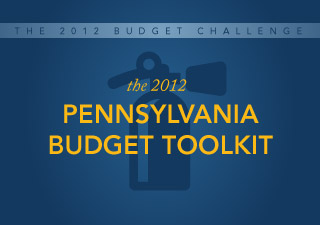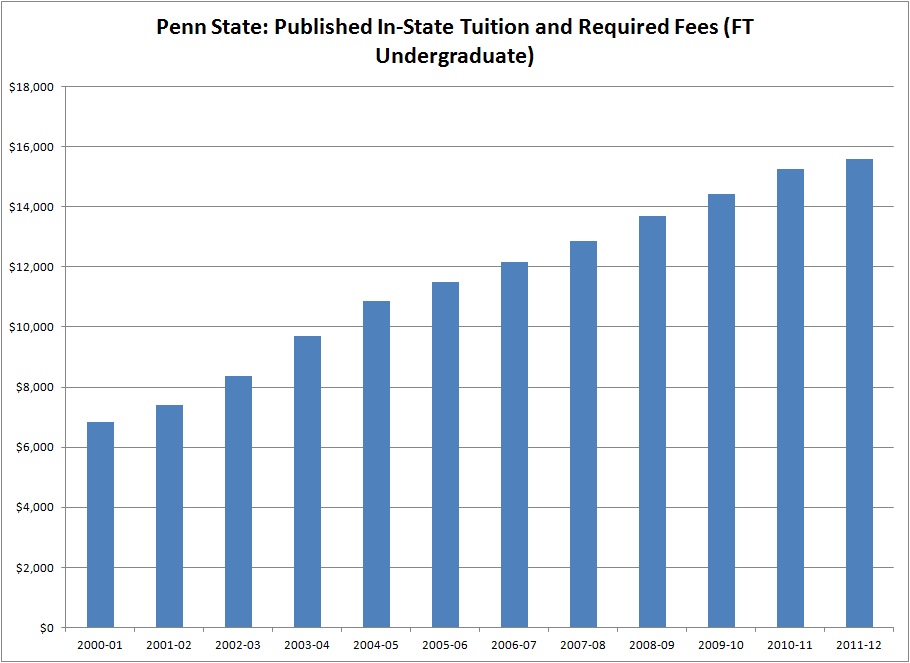Fact Sheet

Pennsylvania Higher Education Spending
Taxpayer Funding for Higher Education in Pennsylvania
- Pennsylvania taxpayers subsidize higher education through appropriations to 14 state-owned universities (Pennsylvania State System of Higher Education, or PASSHE), four state-related universities (Penn State, Pittsburgh, Temple, and Lincoln), community colleges, and the Pennsylvania Higher Education Assistance Agency (PHEAA), which awards grants directly to students.
- The FY 2011-12 state budget reduced Penn State’s subsidy by 31.8%, subsidies for other state-related institutions by 19%, and the PASSHE subsidy by 18%.
- Gov. Tom Corbett’s FY 2012-13 budget proposal reduces state taxpayer subsidies to state-related and state-owned universities by 20% and 30%, respectively.
- The subsidy reduction for state-owned schools represents, on average, 3.8% of their total budget.
- The subsidy reduction for state-related schools represents between 1.5% and 2% of the operating budgets of Penn State, Pittsburgh and Temple.
- Lincoln University’s subsidy would remain unchanged from FY 2011-12.
- The vast majority of colleges and universities in Pennsylvania operate without direct state taxpayer support. More than 200 private colleges and universities in the Keystone State enroll more than 360,000 students.
Institutional Subsidies Don’t Prevent Tuition Hikes
- Tuition at public universities has ballooned over the past decade even with significant taxpayer subsidies.
- Penn State’s tuition more than doubled over the past ten years, to $15,579, for in-state undergraduates.
- Pittsburgh more than doubled tuition, to $16,132, for in-state undergraduates.

Private Schools Are Competitive with State Schools
- Despite receiving taxpayer subsidies, Penn State and Pittsburgh have the highest and second-highest tuitions of four-year public institutions in the nation, according to the U.S. Department of Education.
- Some advocates look at posted tuition prices to argue that state subsidies to public universities keep education affordable for middle-class families. However, students rarely pay the “sticker price” at private universities.
- Nationally, less than 12% of students at private institutions paid the sticker price last year, according to the College Board.
- Last summer, Duquesne University slashed tuition 50% for incoming education majors of high academic standing.
- The actual tuition at state-related schools is higher than what students pay at Grove City College, a four-year private school that accepts no government funds, and the University of Phoenix, a for-profit university.
Taxpayer Subsidies Not Linked to Results
- Taxpayers subsidize universities regardless of their performance. On average, 60.3% of students enrolling in Pennsylvania’s four-year public universities don’t graduate in four years.
- Almost 38% will not graduate in six years.
- Public universities in Pennsylvania spend, on average, $79,514 per student completion, compared to the national four-year public average of $68,617.
Alternatives to Tuition Hikes
- Reduce administrative and personnel costs:
- Penn State increased administrative staff per student by 70.8% between 1993 and 2007. Pittsburgh increased staff by 54.7% in the same period, according to the Goldwater Institute.
- Five small liberal arts colleges in Virginia and West Virginia hired joint faculty and utilized distance education platforms to increase teaching loads.
- PASSHE formed partnerships between the 14 schools to reduce the cost of delivering classes for small majors, such as philosophy and foreign languages.
- Return to core mission:
- Weekly student contact is declining while research hours increase. Undergraduate contact hours declined 27% at Penn State and 29% at Pittsburgh, while research hours increased 93% and 55% from 1972 through 2010 according to data provided to the Joint State Government Commission.
- California University of Pennsylvania built a $52 million, 5,000 seat arena and spent $20 million in parking improvements. The university increased debt obligations five-fold over 10 years.
- Eliminate and consolidate unpopular programs:
- Minnesota’s system of public colleges and universities closed 345 programs and approved 191 new ones between 2007 and 2009.
- Massachusetts raised admission requirements at public colleges to encourage students in need of remediation to begin at community colleges. The savings were used to reduce tuition for students who earn community college degrees and go on to finish their four-year degrees at public colleges.
- Higher education funding should go directly to students, which is more effective at reducing college costs than institutional support.
- Research shows most of the increased state appropriations are not being devoted to lowering tuition. For every one dollar of added state appropriations per student, only a mere 30 cents is used to lower tuition at public universities.
# # #
For more information on the Pennsylvania State Budget, visit www.CommonwealthFoundation.org/Budget.